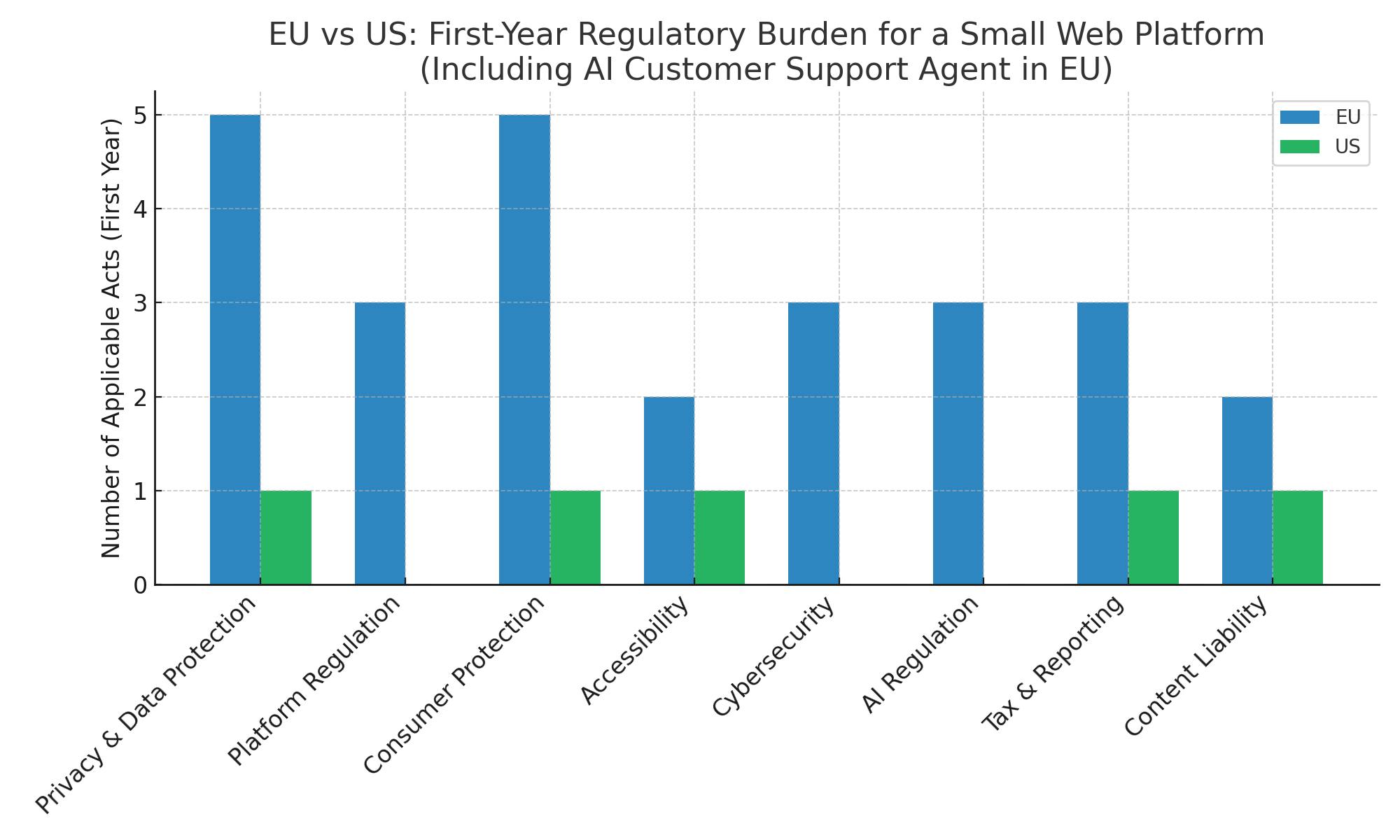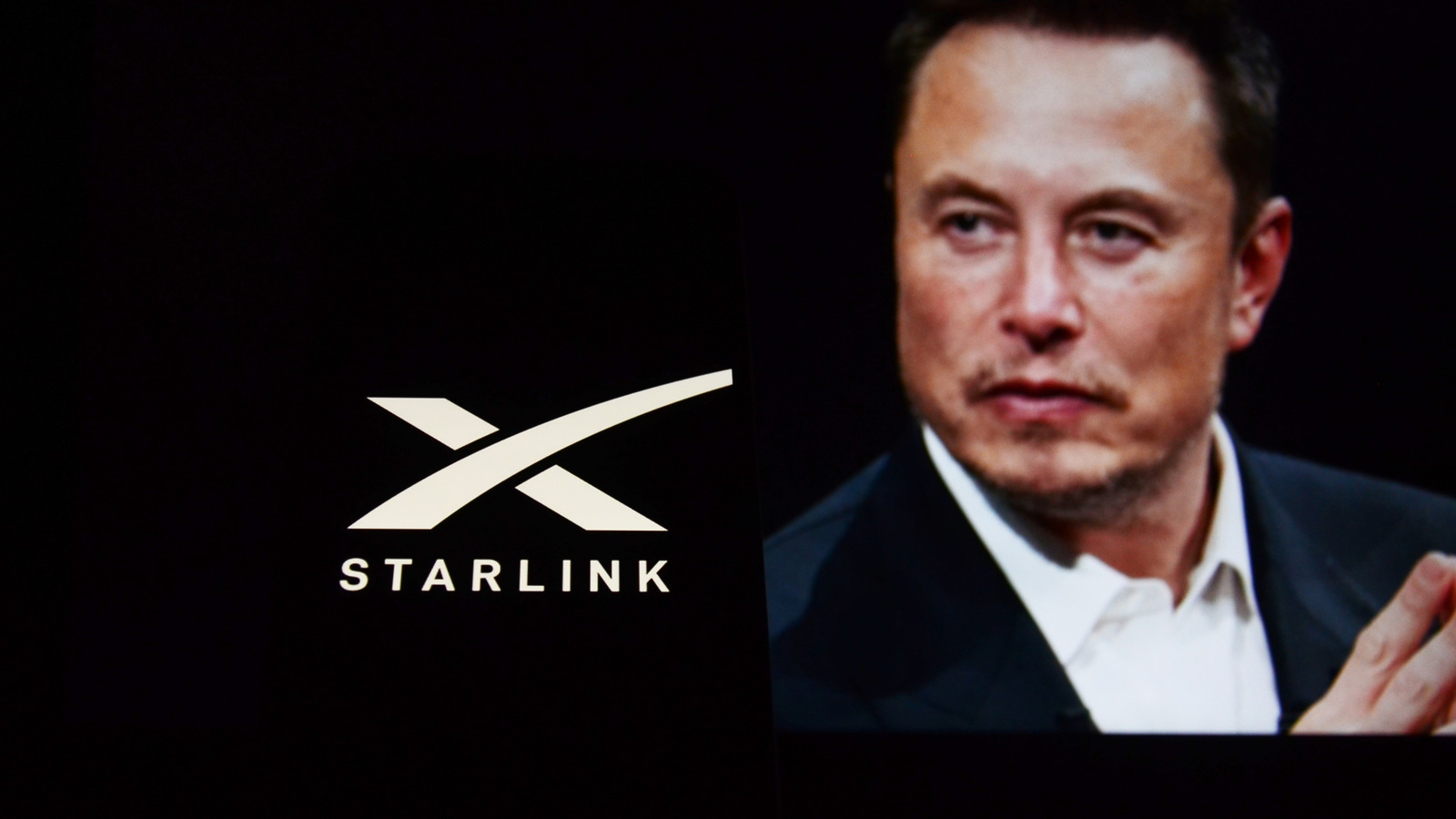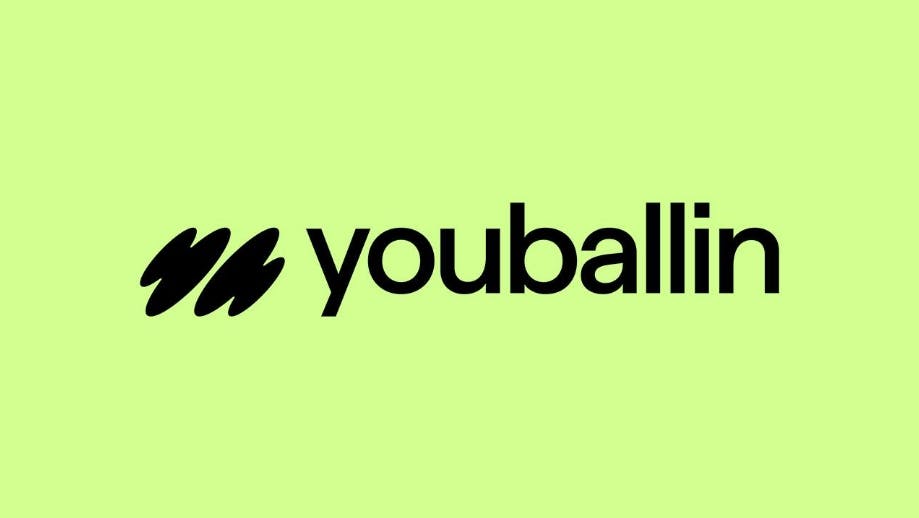For founders in the digital economy, the first year after incorporation can determine not only market success but also legal survival. The regulatory climate shapes every business decision, from product design to hiring. Nowhere is this more visible than in a side-by-side comparison of the European Union and the United States. To illustrate the gap, let’s imagine two identical startups: both operate a consumer-facing web platform with user-generated content, sell digital services cross-border, and use an AI-powered customer support agent. The AI in the EU case is a self-hosted open-source model from Meta (e.g., LLaMA), integrated into the website to handle user inquiries. Both founders want to be fully compliant by the end of their first year.
The EU Founder’s Regulatory Landscape
In the European Union, even a small digital platform triggers a broad range of horizontal legislation. Within twelve months, the founder must comply with at least the following frameworks:
- General Data Protection Regulation (GDPR) – Regulation (EU) 2016/679: full-scale personal data compliance, including lawful basis assessment, DPIAs for AI processing, and possibly appointment of a Data Protection Officer.
- ePrivacy Directive – Directive 2002/58/EC: consent management for cookies, tracking pixels, and similar technologies.
- Consumer Rights Directive – Directive 2011/83/EU and Unfair Commercial Practices Directive – Directive 2005/29/EC: terms of service, withdrawal rights, fair advertising, and avoidance of dark patterns.
- Price Indication Directive – Directive 98/6/EC as amended by Directive (EU) 2019/2161: lowest prior price rules for promotions.
- Digital Services Act (DSA) – Regulation (EU) 2022/2065: notice-and-action mechanisms for illegal content, trader traceability, transparency reporting, and designation of a single contact point.
- Copyright in the Digital Single Market Directive – Directive (EU) 2019/790: compliance with copyright obligations for hosting user-generated content.
- Geo-blocking Regulation – Regulation (EU) 2018/302: prohibition of unjustified geographic restrictions.
- European Accessibility Act – Directive (EU) 2019/882 and Web Accessibility Directive – Directive (EU) 2016/2102: accessibility standards for websites and online services.
- NIS 2 Directive – Directive (EU) 2022/2555: baseline cybersecurity measures and incident reporting (applies to many online service providers).
- Cybersecurity Act – Regulation (EU) 2019/881: potential certification schemes for ICT products and services.
- Cyber Resilience Act – Regulation (EU) 2024/2847: security requirements for connected digital products, potentially triggered by the AI integration.
- General Product Safety Regulation – Regulation (EU) 2023/988: obligations for safe digital products, even if purely software-based.
- Market Surveillance Regulation – Regulation (EU) 2019/1020: cooperation with authorities on product compliance.
- VAT Directive – Directive 2006/112/EC and Implementing Regulation (EU) 282/2011: VAT registration, OSS/IOSS reporting for cross-border sales.
- DAC7 Directive – Directive (EU) 2021/514: tax reporting if the platform qualifies as an “operator” for marketplace rules.
- eIDAS Regulation – Regulation (EU) 910/2014: trust services if electronic signatures or authentication are offered.
- Political Advertising Regulation – Regulation (EU) 2024/900: applies if political content or ads are carried.
- European Media Freedom Act – Regulation (EU) 2024/1083: editorial independence safeguards if offering news-like services.
- Artificial Intelligence Act (AI Act) – Regulation (EU) 2024/1689: classification of the AI support agent, transparency to users, and conformity assessment if deemed high-risk.
- Data Act – Regulation (EU) 2023/2854: data sharing and portability obligations, potentially triggered if the AI interacts with user-provided datasets.
- Data Governance Act – Regulation (EU) 2022/868: governance of data intermediaries (if applicable).
- Online Dispute Resolution Regulation – Regulation (EU) 524/2013 and Consumer ADR Directive – Directive 2013/11/EU: links to dispute resolution bodies on the website.
- Services Directive – Directive 2006/123/EC: disclosure of contact and regulatory details. This is just the baseline — it assumes no engagement in financial services, healthcare, or other sector-specific markets.
The US Founder’s Regulatory Landscape
By contrast, the US founder faces no single, horizontal framework like the GDPR or DSA. The main federal and state rules are:
- State privacy laws (e.g., California CCPA/CPRA, Virginia VCDPA): notice and opt-out rights for personal data.
- Children’s Online Privacy Protection Act (COPPA): applies only if collecting data from under-13 users.
- Federal Trade Commission Act – Section 5: prohibition on unfair or deceptive practices.
- Americans with Disabilities Act (ADA): interpreted by courts to cover websites; requires reasonable accessibility.
- Section 230 of the Communications Decency Act: shields platforms from liability for user-generated content (no proactive monitoring required).
- State sales tax rules if physical nexus or certain economic thresholds are met. There is no federal AI-specific regulation for the customer support agent, though FTC guidance warns against deceptive AI use.
Impact of AI in the EU Case
The EU founder’s AI support agent is not a free regulatory choice. Under the Artificial Intelligence Act, the self-hosted Meta model would at least qualify as a “general-purpose AI system” integrated into a customer service function.
This triggers:
- Transparency to users that they are interacting with an AI system.
- Risk assessment for bias or misinformation in customer interactions.
- Documentation of the training data sources (where possible with open-source).
- Potential conformity assessment if the AI support function is used in a regulated service domain. GDPR adds a second layer: any personal data processed by the AI must have a lawful basis, and if automated decision-making significantly affects users, additional rights apply (Articles 13–15, 22 GDPR).
First-Year Burden Gap
The founder in the EU will spend the first twelve months establishing compliance processes for two dozen separate legal frameworks, many of them directly applicable from day one. These include ongoing operational duties such as DSA transparency reporting, GDPR record-keeping, and NIS 2 security audits. The AI integration adds obligations under the AI Act, GDPR, and potentially the Cyber Resilience Act. The US founder’s compliance plan is much shorter, largely focused on drafting a privacy policy, ensuring truthful marketing, meeting accessibility best practices, and paying attention to applicable state laws. There is no equivalent to the DSA or AI Act; liability for user content remains shielded by Section 230.
Conclusion
For a small IT business running a web platform, the EU’s regulatory density imposes a high fixed compliance cost from the outset, regardless of market share or turnover. The US model remains light-touch for general web platforms, focusing on post-hoc enforcement rather than detailed ex ante obligations. The UK sits between these two poles, retaining GDPR-style privacy rules but not (yet) the EU’s full stack of overlapping platform and AI laws. In practical terms, the EU founder must budget legal and operational resources from day one, while the US founder can focus on product-market fit before building a full compliance apparatus.









